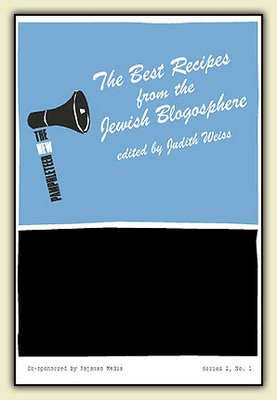It occurred to me recently that the modern Western worldview is heavily colored by the desire to see the hidden good.
Once upon a time, things were a lot simpler. You had your good guys and your bad guys, and there was no ambiguity about who was who. When we as children played Cowboys and Indians, the cowboys were the Good Guys and the Indians the villains. Multicultural sensitivities? Not in those less-complicated times.
It was easy, then.
Our cultural touchstones all reinforced the clear distinctions we all had learned at the earliest stages in our lives. Take “The Wizard of Oz,” for instance. There wasn’t a lot of debate about Good and Evil - it was clear as day, built right into the names of the characters. The Wicked Witch of the West (and her short-lived sister, the Wicked Witch of the East) were, well, Wicked. Duh. Glinda, the Good Witch of the North, was Good. How simple does it get?
Many years later, along came “Star Wars,” George Lucas’s homage to the cliffhanger space-opera serials of the 1930’s. The original “Star Wars” - this was back before Lucas had thought to rechristen it “Episode IV - A New Hope” - was populated by classic Filmic Archetypes. The Young Hero. The Cynical Mercenary with the Heart of Gold. The Good Princess In Need of Rescue and/or Salvation. And, of course, the Bad Guys.
Darth Vader was a hella Bad Guy, clearly the Baddest Bad Guy in the Imperium. A dude who was so bad, wiping out entire planets’ populations was all in a day’s work. I’m sure even his vacations would have involved puppy-kicking or kitty-drowning on some resort planet.
“The Wizard of Oz” and “Star Wars” - both tales of worlds with no moral ambiguity. The good was good, the bad was bad, and you knew whose side you ought to be on. Stories that made perfect sense to people who grew up in the period following what Studs Terkel called “The Good War” - the war in which the Bad Guys were genocidal maniacs and the Good Guys...well, they were Us.
But for modern Westerners - Americans, in particular - this black-and-white view of the universe grew unsatisfying somehow. Our ability to believe in the existence of genuine Evil seems to have become compromised...and with it, our ability to believe in Good.
Evil isn’t really evil, you see, in a universe of moral relativism. It becomes a function of one’s point of view.
All of this came to me as I synthesized a few Revisionist Cultural Inputs to which I have been exposed. Viz., Jon Sciezka’s The True Story of the Three Little Pigs, a 1996 book that purports to tell the real story of the eponymous swine...from the Big Bad Wolf’s point of view. I discovered this book through the good offices of SWMBO, who was using it as instructional material in her classroom, and found it both amusing and fascinating. Amusing...because it is written tongue-in-cheek. Fascinating...because it tells a familiar story from an unexpected point of view, leading to a complete reevaluation of the characters and their relative positions on the Good-Versus-Evil Spectrum - if one accepts its central premise.
Perhaps it is coincidence that Gregory Maguire’s novel Wicked: The Life and Times of the Wicked Witch of the West, the book upon which the hit musical “Wicked” was based, was published in 1995 - within a year of Sciezka’s magnum opus. Likewise, Wicked tells a familiar story from a new and different perspective, casting characters and their motives in a new (and largely more sympathetic) light.
We saw the musical last week at the Fabulous Fox, and it was a magnificent production...but afterward, I found myself thinking about - of all things - the Star Wars movies, and the devolution of Darth Vader, villain extraordinaire, from the blackest-hearted humanoid in the Galaxy to - what the fuck?!!? - a cute little kid. It was a predictable component of a story arc that went awry as soon as Vader uttered the fateful words, “Luke, I am your father” in The Empire Strikes Back.
Bad guys are so much more interesting when they are three-dimensional human beings, not cardboard cutouts of black construction paper. And everyone loves a good Redemption Story (“Save the evildoers...collect them all...win valuable prizes!”). But Lucas went too far with Vader, who was so deliciously Eeeeeevil in the first Star Wars movie. The real Star Wars movie. Turning him into a misunderstood, heartbroken teenager with lava scars (worse, even, than acne!) made him weak and boring.
It was a little like the cartoon Nazis of “Hogan’s Heroes,” too stupid to be really evil...and bearing little relation to Real Nazis.
What is it about our society that makes us want to reexamine That Which Is Familiar in order to create an alternative narrative? All of this Modern Revisionism...where does it come from? And is it a good thing, or does it diminish the power of our old archetypes?
My suspicion is that a lot of this foolishness got started in the early 1970’s, in the closing years of the Nixon administration. That Watergate business taught us
several lessons that seem to have had a lasting cultural impact, among them that the government can and will lie to you and that things are not as they appear to be. The result is that we have become a cynical society that does not always trust the Official Explanation. And, I suppose, to some extent that is a good thing.
But it has a way of messing with our Sacred Archetypes.
When we know why the Bad Guy is bad, is he as bad? Is he even, perhaps, good? (And is it a good thing if he is good?)
What story is more compelling, the one in which unquestioned good combats unquestioned evil, or the one that purports to delve beneath the surface to find what might be a deeper truth? Can the second exist without the first?
The Missus is fond of saying that where there is a dispute - say, as in a divorce situation - there are at least three sides to the story. There’s his side, there’s her side...and there’s the truth.
In our search for that elusive Truth, do we lose something? Do all those shades of grey make it harder to see the crisp, clear divisions between the black and white, to be able to distinguish between good and evil in the real world?
Once upon a time, things were a lot simpler. You had your good guys and your bad guys, and there was no ambiguity about who was who. When we as children played Cowboys and Indians, the cowboys were the Good Guys and the Indians the villains. Multicultural sensitivities? Not in those less-complicated times.
It was easy, then.
Our cultural touchstones all reinforced the clear distinctions we all had learned at the earliest stages in our lives. Take “The Wizard of Oz,” for instance. There wasn’t a lot of debate about Good and Evil - it was clear as day, built right into the names of the characters. The Wicked Witch of the West (and her short-lived sister, the Wicked Witch of the East) were, well, Wicked. Duh. Glinda, the Good Witch of the North, was Good. How simple does it get?
Many years later, along came “Star Wars,” George Lucas’s homage to the cliffhanger space-opera serials of the 1930’s. The original “Star Wars” - this was back before Lucas had thought to rechristen it “Episode IV - A New Hope” - was populated by classic Filmic Archetypes. The Young Hero. The Cynical Mercenary with the Heart of Gold. The Good Princess In Need of Rescue and/or Salvation. And, of course, the Bad Guys.
Darth Vader was a hella Bad Guy, clearly the Baddest Bad Guy in the Imperium. A dude who was so bad, wiping out entire planets’ populations was all in a day’s work. I’m sure even his vacations would have involved puppy-kicking or kitty-drowning on some resort planet.
“The Wizard of Oz” and “Star Wars” - both tales of worlds with no moral ambiguity. The good was good, the bad was bad, and you knew whose side you ought to be on. Stories that made perfect sense to people who grew up in the period following what Studs Terkel called “The Good War” - the war in which the Bad Guys were genocidal maniacs and the Good Guys...well, they were Us.
But for modern Westerners - Americans, in particular - this black-and-white view of the universe grew unsatisfying somehow. Our ability to believe in the existence of genuine Evil seems to have become compromised...and with it, our ability to believe in Good.
Evil isn’t really evil, you see, in a universe of moral relativism. It becomes a function of one’s point of view.
All of this came to me as I synthesized a few Revisionist Cultural Inputs to which I have been exposed. Viz., Jon Sciezka’s The True Story of the Three Little Pigs, a 1996 book that purports to tell the real story of the eponymous swine...from the Big Bad Wolf’s point of view. I discovered this book through the good offices of SWMBO, who was using it as instructional material in her classroom, and found it both amusing and fascinating. Amusing...because it is written tongue-in-cheek. Fascinating...because it tells a familiar story from an unexpected point of view, leading to a complete reevaluation of the characters and their relative positions on the Good-Versus-Evil Spectrum - if one accepts its central premise.
Perhaps it is coincidence that Gregory Maguire’s novel Wicked: The Life and Times of the Wicked Witch of the West, the book upon which the hit musical “Wicked” was based, was published in 1995 - within a year of Sciezka’s magnum opus. Likewise, Wicked tells a familiar story from a new and different perspective, casting characters and their motives in a new (and largely more sympathetic) light.
We saw the musical last week at the Fabulous Fox, and it was a magnificent production...but afterward, I found myself thinking about - of all things - the Star Wars movies, and the devolution of Darth Vader, villain extraordinaire, from the blackest-hearted humanoid in the Galaxy to - what the fuck?!!? - a cute little kid. It was a predictable component of a story arc that went awry as soon as Vader uttered the fateful words, “Luke, I am your father” in The Empire Strikes Back.
Bad guys are so much more interesting when they are three-dimensional human beings, not cardboard cutouts of black construction paper. And everyone loves a good Redemption Story (“Save the evildoers...collect them all...win valuable prizes!”). But Lucas went too far with Vader, who was so deliciously Eeeeeevil in the first Star Wars movie. The real Star Wars movie. Turning him into a misunderstood, heartbroken teenager with lava scars (worse, even, than acne!) made him weak and boring.
It was a little like the cartoon Nazis of “Hogan’s Heroes,” too stupid to be really evil...and bearing little relation to Real Nazis.
What is it about our society that makes us want to reexamine That Which Is Familiar in order to create an alternative narrative? All of this Modern Revisionism...where does it come from? And is it a good thing, or does it diminish the power of our old archetypes?
My suspicion is that a lot of this foolishness got started in the early 1970’s, in the closing years of the Nixon administration. That Watergate business taught us
several lessons that seem to have had a lasting cultural impact, among them that the government can and will lie to you and that things are not as they appear to be. The result is that we have become a cynical society that does not always trust the Official Explanation. And, I suppose, to some extent that is a good thing.
But it has a way of messing with our Sacred Archetypes.
When we know why the Bad Guy is bad, is he as bad? Is he even, perhaps, good? (And is it a good thing if he is good?)
What story is more compelling, the one in which unquestioned good combats unquestioned evil, or the one that purports to delve beneath the surface to find what might be a deeper truth? Can the second exist without the first?
The Missus is fond of saying that where there is a dispute - say, as in a divorce situation - there are at least three sides to the story. There’s his side, there’s her side...and there’s the truth.
In our search for that elusive Truth, do we lose something? Do all those shades of grey make it harder to see the crisp, clear divisions between the black and white, to be able to distinguish between good and evil in the real world?










No comments:
Post a Comment